#stat magni nominis umbra
Explore tagged Tumblr posts
Text
had not previously considered this but. why is crassus(‘ unavenged ghost) the first named person in the pharsalia??????
#ignoring place names + quis furor o cives etc#i need to think about this more bcs like. umbra […] crassus inulta is SO adjacent to stat magni nominis umbra#which sadly is Not the first time pompey is named. it’s like the third. but all in the same chunk of text at least??#as in. it’s adjacent to stat magni nominis umbra in that there is a ghostly member of the triumvirate#(mimetic double decapitation bonus too)#either prominently named (crassus) + a ghost + not otherwise appearing in the poem#(yes crassus was dead when the civil war started so his appearance woukd be. unusual. but not unprecedented! julia’s ghost DOES appear!)#or prominently unnamed (ghost of a great name / the name magnus. lucan loves to get pompey to vanish into puns on his own name)#+ proleptically dead#+ arguably the Main Guy in the poem. i will not say the protagonist but like he is very much There And Important#anyway this post brought to you by me thinking huh i don’t think about crassus enough#thank you trikaranos 🫡#pharsalia#beeps
23 notes
·
View notes
Text
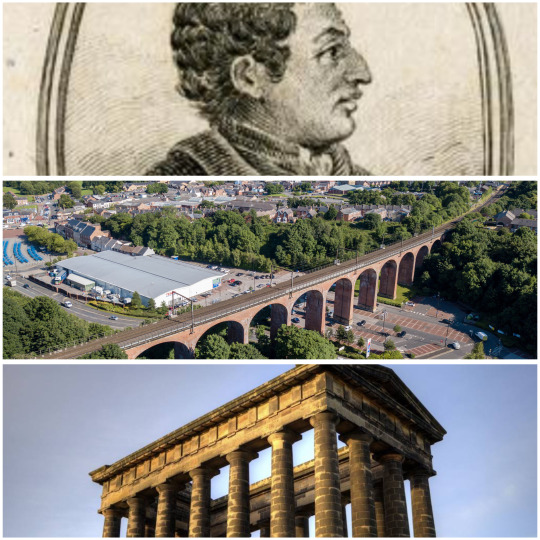
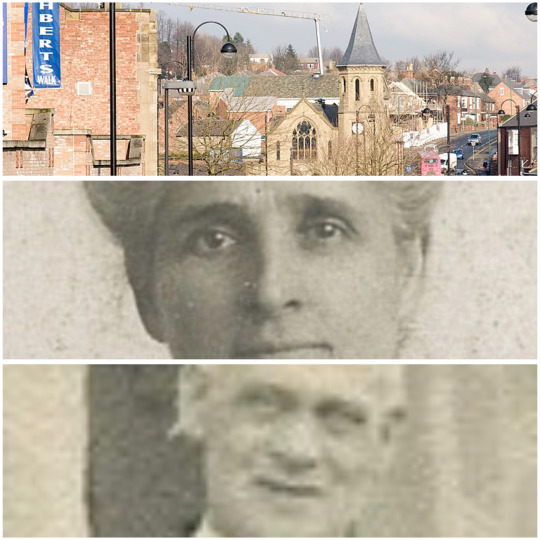
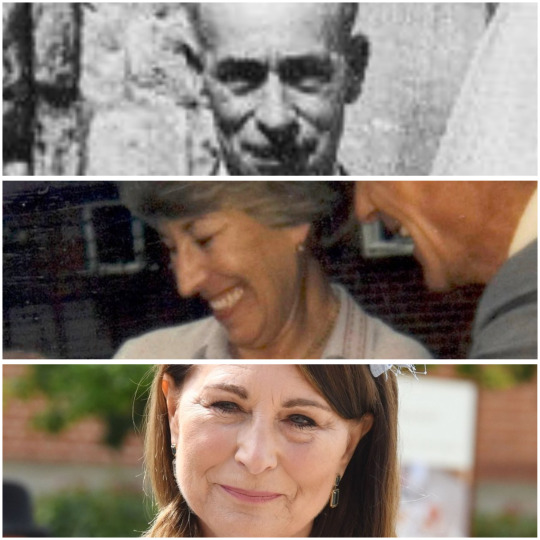
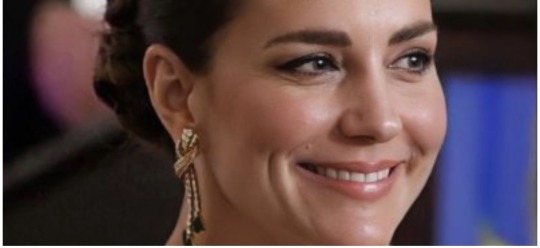
Baronet -> Coal-miners -> Royalty
“A time may yet come, perchance, when a descendant of one of these simple artizans may arise, not unworthy of the Conyers' ancient renown; and it will be a gratifying discovery to some future genealogist, when he succeeds in tracing in the quarterings of such a descendant the unsullied bearing of Conyers of Durham." Sir Bernard Burke, 1861.
In 1861 the genealogist and publisher of Burke’s Peerage Sir Bernard Burke, in his book "Vicissitudes of Families", dedicated a chapter to the “The Fall of Conyers" which concludes with the following: "Magni stat nominis umbra! The poor Baronet left three daughters, married in very humble life: Jane, to William Hardy; Elizabeth, to Joseph Hutchinson; and Dorothy, to Joseph Barker, all working men in the little town of Chester-le-Street. A time may yet come, perchance, when a descendant of one of these simple artizans may arise, not unworthy of the Conyers' ancient renown; and it will be a gratifying discovery to some future genealogist, when he succeeds in tracing in the quarterings of such a descendant the unsullied bearing of Conyers of Durham."
Sir Thomas Conyers, was the 9th and last Baronet Conyers of Horden Hall. While a gentleman at birth, he was reduced to poverty and resided at the Durham Workhouse. His pride made him reject financial aid from his distant relatives, among them his second cousin Mary Eleanor Bowes, Countess of Strathmore, whose funeral he attended at Westminster Abbey in 1800. At the time she was one of the wealthiest women in England and is an ancestor of Elizabeth Bowes-Lyons, the late Queen Mother.
His later years were made somewhat more comfortable at the aid of another distant cousin, George Lumley-Saunderson, the 5th Earl of Scarborough who provided him with a small house. Sir Thomas died a pauper on 15 April 1810. His surviving children, three daughters had married working men in the little town of Chester-le-Street, County Durham. As if from a Thomas Hardy novel, his daughter Jane married a man named William Hardy.
For five generations Sir Thomas Conyers descendants would work as labourers, and often in coal mines once owned by distant ancestors and now owned by the Bowes-Lyon family. By the sixth generation his descendant Robert Harrison, a carpenter left his family still working in the coal mines to seek opportunities in London. There he married and had a daughter, Dorothy who married a builder named Ronald Goldsmith.
The early years of Dorothy and Ronald’s marriage and their children's upbringing were spent in a comfortable council house, providing the security needed to buy their own home. Their daughter, Carole, became a flight attendant and married a young flight dispatcher, Michael. They settled in Berkshire and spent a few years in Jordan, working for British Airways, before returning to Berkshire, where Carole started her own business at her kitchen table.
Almost ten generations and 201 years after Sir Thomas Conyers died a pauper, his descendant Catherine Middleton married Prince William of Wales on 29 April 2011.
Family Line
Sir Thomas Conyers 9th Bt. Conyers of Horden (drawing) m. Isabel Lambton
Jane Conyers of Chester Le Street, County Durham m. William Hardy of
Jane Hardy of Biddick, County Durham m. James Liddell
Anthony Liddell of Little Lumley, County Durham m. Martha Stephenson
Jane Liddell (photo) m. John Harrison
John Harrison (photo) m. Jane Hill
Robert Harrison (photo) m. Elizabeth Temple
Dorothy Harrison (photo) m. Ronald Goldsmith
Carole Goldsmith m. Michael Middleton
Catherine Middleton m. Prince William of Wales
#ktd#brf#british royal family#kate middleton#princess of wales#prince william#Carole Middleton#The north#england#northern england#durham#coal#mining#elizabeth bowes lyon#the queen mother#queen mother
107 notes
·
View notes
Text
this letter really Got To Me for reasons of He Is So Fucking Already Dead. you want to read it soooooo bad. but also im super sick atm and spent 100 years agonising over 'nec omnino simulacrum aliquod ac vestigium civitatis' like in the end i went w 'not even some shade or trace of free citizenship' but only after thinking like. to ME simulacrum is the presence of something similar enough to what is now absent to make that absence obvious and in this case painful. and it can also sometimes mean ghost or funeral effigy or all those cool things. and vestigium is just an absence where there was something before. is cicero trying to say the republic is so Gone that there Isn't even a ghost? yes sometimes a ghost is the prominent absence of a ghost, but is the prominent absence of the prominent absence of a ghost a ghost??? this is cool to rotate in your mind if you think about the republic not dying and just turning into something else. it's octavian's birthday today btw. anyway i made this huge list of potential translations of simulacrum and reeeeaaaally wanted to go w effigy but you don't get effigies of things that aren't People and then i almost went with phantom or even phantasma for shakespeare's julius caesar reasons but it thought that really Was too much and so i went w shade because like. stat magni nominis umbra :/
in today's letter: antony sucks and cicero has hated him for a while! cicero cares more for the republic than for his own life! cicero wishes but does not expect to still be alive by 42 bce! cicero implores the consul-designate appointed by a dead tyrant to protect the republic!
about e-pistulae | previous letters | subscribe to emails from cicero?
#did i overthink this: absolutely yes#is this coherent: potentially not at all#epistulaeposting#lucancore#beeps
52 notes
·
View notes
Photo
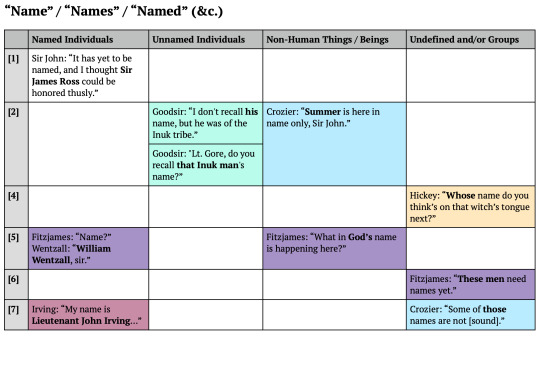



In which the author does a philoTerrological Analysis, feat. color-coded Charts™️ [link to pdf version]
a fill for @theterrorbingo square “scientific observation” because God knows I spent more time on this than I have on certain things that I’ve called a Terror bingo square in times past and! It’s good! To sometimes! Push the boundaries of fanwork! (This is a meta, I’m just gonna call this a meta. Good? Good.)
The data contained in these charts comes, in part, from this lovely post by @handfuloftime and this brilliant addition by @catilinas – I was inspired to make this because of a lovely message from @glorioustidalwavedefendor (thank you!)
So, what on earth are these charts, and what do they say about AMC’s The Terror (2018)? Find out, below the cut!
BASICALLY this chart is my way of visualizing every time the words “Name” / “Names” / “Named” (&c.) or “Call” / “Calls” / “Called” (&c.) are used in The Terror. There are two charts – on the left, the “Name” chart, on the right, the “Call” chart, both organized the same way: the rows correspond to episodes (episodes are only skipped when no variation of the relevant words appear), and the columns correspond to four “categories” referring to the object being “named” or “called.” These categories are:
Named Individuals (i.e. named in the show AND with their name known to – or immediately learned by – the character speaking.)
Unnamed Individuals (i.e. unnamed in the show – like Goodsir’s “Inuk man,” aka the historical Eenoolooapik – or unnamed with respect to the character(s) speaking, such as David Young is to Goodsir and Crozier in episode 10 – because they’ve forgotten – or as Silna is to Lt. Little in episode 3.)
Non-Human Things / Beings (i.e. ANYTHING non-human, from summer to God.)
Undefined and/or Groups (i.e. things that are less clearly separated out than the other instances of “named,” and “called,” which largely have a single person or thing as their object; this is a loose category and there are “groups” that sometimes slip out into the “individuals” columns.)
As I noted here, the issue of “who gets a name” breaks down into these numbers – pulled from the first chart, columns 1, [2] and (3) – ignoring column 4:
(3) [David Young]
(2) (God)
(2) James Fitzjames
(2) [Eenoolooapik]
(1) Edward [Little]
(1) The Barrows / (the Admiralty)
(1) Lt. John Irving
(1) William Wentzall
(1) (summer)
(1) Sir James Ross
I think it’s interesting that, if you remove unnamed individuals [David Young and Eenoolooapik] and non-human entities (God), Fitzjames is the only person about whom “name” is used more than once. BUT it’s Fitzjames using that word, “name,” and he does so twice in quick succession to reach that total – “My name… Even my name was made up, for my baptism.” Which makes “Myname Evenmyname” into a sort of proxy for “James Fitzjames” itself – equally artificial, like Odysseus’s moniker OuTis = NoMan. (And now, as per tate’s tags, “odysseus son of laertes snipes me with a bow and arrow” but at least I can die knowing that I, at least, have managed to mention the cretan lie.)
The other important thing to note about these charts is that they’re color-coded by who is speaking, so each character who uses “name” and/or “call” more than once gets a unique color (blue for Crozier, teal for Goodsir, purple for Fitzjames, yellow for Hickey, &c.) In the “names” chart on the left, what this shows us is that Crozier & Goodsir do most of the “naming” at the beginning and end of the show, and Fitzjames does most of it in the middle. (Crozier & Goodsir also never “name” already “named” individuals, whereas Fitzjames almost exclusively does so, and in the one instance where he “names” an undefined group, it’s because he’s lamenting that said undefined group is composed of “men” who “need names yet.” As tate said, “fitzjames is both named And called things because as much as his identity is “””deceptive”””, it doesn’t have another secret double-self, it only hides parts of itself.” Fitzjames lives in a world where things are neat and orderly and can be defined; he never once truly strays from this – though I think few of us think of him as fervently religious, the text does reinforce that Fitzjames sees the world as following a divine order: from “More than God loves them,” to “What in God’s name is happening here?” and back again to “More than God loves them,” before ending with that heartbreaking last, “God wants you to live.”)
OKAY time for the second chart aka the chart on the left aka the “calling” chart.
This is based HEAVILY on this incredible post by @catilinas (though I did put back in the “all 12 times it is used to mean shout or summon” because I think some of those are…. shrimpteresting.)
The issue of “who gets called (both named OR summoned)” breaks down into these numbers – pulled from the second chart, starting with just people, i.e. columns 1 and [2], for now:
(4) Aglooka (or, well, the same two times twice, because the scene’s repeated)
(4) Crozier (Francis vs. Captain)
(3) Goodsir (Harry vs. Doctor)
(1) Hartnell
(1) Crozier’s head (“Sir John will have your head.” Dare I say…. caput Crozieris = caput Ciceronis? Sir Pompey will have your head... if he doesn’t lose his own, first.)
(1) [Silna’s tribe]
(1) [the old lad on the Prince Regent the doxies used to call ‘Six Pounder’]
(1) Fitzjames
(1) [another shaman]
(1) “A man called Cornelius Hickey”
As tate said, “i do think there is Something going on w the fact that ‘call’ is only used multiple times this close together for a) aglooka and b) this scene [don’t ever call me francis again], and Both are wrt crozier, and both involve him Not being / not wanting to be Called by his actual name.” There IS something going on, and I propose that the missing piece is that, just like w/ “names,” Crozier & Goodsir are tied together – Goodsir is to “Harry vs. Doctor” as Crozier is to “Francis vs. Captain,” but flipped: Goodsir wants the intimacy of a first name, while Francis (initially) rejects it; but they are both stripped of their titles regardless – by the end, Goodsir insists that, “If ever I was a Doctor, I am one no longer,” and Magnus Manson says to Crozier, “Mr. Hickey says I'm not to call you ‘Captain’ any more.”
AND next we tally tate’s 8 singular “Things” (aka column 3)
(1) watch duty
(1) David Young’s liver (“you wouldn’t call this cirrhotic”)
(1) Irving’s ‘discretion’ (“call it anything but help, mr hickey”)
(1) Inuktitut
(1) Nunavut
(1) “this thing [Crozier] calls truth”
(1) Victoria, Texas
(1) The Northwest Passage (“his own chilly shortcut to china, he calls it”)
To which we can also add “Things” that are “called” as in “summoned,” rather than “called” as in “named.”
(2) the Tuunbaq (“Haven't we been calling it right to us all day?” / “So call it with me now, boys.”)
(1) the cannon (“[Mr. Blanky]’s calling for the cannon [for to shoot the Tuunbaq]”)
While I don’t have any additional thoughts on this collection of objects in and of themselves, I think we do need all of them to get the full picture of the chart esp. re: the color-coding of the speaking characters. Basically, when we look at who is using “call” repeatedly, it’s a 4-(or 5-)part narrative arc:
[Rae] (aka the translator, whom I’ve “named” John Rae for simplicity) & James Clark Ross (at the very beginning)
Goodsir, LOTS of Goodsir (color = teal, episodes 1-5)
Crozier, LOTS of Crozier (color = blue, episodes 5-8)
Hickey, running the gamut from “this thing [Crozier] calls truth” to summoning the Tuunbaq (color = yellow, episodes 8-10)
(The 5th part comes in when you take into account the repeated Rae & Ross scene in episode 10.)
So uhhhh that’s a classical ring composition folks:
[Aglooka]
“Goodsir, the Good Sir,”
[Crozier]
“E.C. who Is Not ‘a man called Cornelius Hickey’”
[Aglooka]

The narrative backbone of this entire miniseries is the idea of what you are “called,” (Crozier) and the details are fleshed out by how you are “named” [or, perhaps, unnamed.]
#theterrorbingo#the terror#the terror amc#terror meta#terrorposting#stat Roma pristina nomine???#nomina#stat magni nominis umbra
45 notes
·
View notes
Note
AKAKAJKS JUST SAW UR REPLY TO MY PREV ASK godcrime! anon here omg i know almost nothing ab any of this but the way u say it really makes me super interested in all of it :0 that's honestly so cool tbh and if u ever do make a translation that picks a side i would love love love to read it 🥺💖 i think it's amazing that your passion for this is so apparent !! hope u have an Amazing day xoxo
HUGE RIP this ask is probably many many months old but this is a sideblog so i. did not see it. anyway if you ARE still interested in lucan and his GODCRIMES i do extremely recommend reading the pharsalia it is one of my favourite poems of all time ever AND if you’re interested in the paradoxes of picking a side in civil war (not necessarily tdw translation though) then i also recommend shadi bartch’s book ideology in cold blood: a reading of lucan’s civil war. maybe one day i will also finish even just book 1 of my horrible pharsalia translation but dfhjsfdhs a) dactylic hexameter is Hard; b) having to guess how an anglophone reader will pronounce latin names and then fitting Those pronunciations into dactylic hexameter is Hard; and c) i uhhhhhh got stuck on pompey magnus’ (one of the main characters) NAME :((( there’s this incredible line when he’s introduced where lucan says ‘stat magni nominis umbra’ and like. magnus is both his actual name And the word for great. do you translate that as ‘he stood as the ghost of a great name’ or ‘he stood as the ghost of the name magnus’ (not even getting into do you translate umbra as shadow or ghost. i am more a fan of ghost but fsiuhsnvjsvjhdnjdkzc pain suffering agony woe). bcs even just picking one direction there limits The Imagery. but lucan also puns on the word/name magnus literally all the time and HOW do you translate that into english. especially when other words e.g. tantus in some contexts can’t be translated as anything Other than great, and so great doesn’t even map perfectly onto magnus in a way that can be explained in a translator’s note. i got to the point where i was like. what if i just put a ;) emoji after every ‘great’ that is a pun on pompey’s name like that’s fun and disruptive. but once you’re doing that And capitalising GODCRIME you might as well commit to the ideal weird paratext collage pharsalia translation and i literally do not have the time effort or ability for That :(((
#anon if you're still out there after all these months have an amazing day also AND consider reading lucan :-)#it has civil war lucan's Twisted Mind the most detailed description of necromancy from the ancient world many directions of hauntings#time standing still or turning around and going backwards or forming a flat circle. constant decapitation jokes.#and of course almost a whole book of an army losing in a fight againt assorted venomous snakes#What's Not To Love#r
7 notes
·
View notes
Quote
México parece destinado a que los pueblos que se han establecido en él en diversas y remotas épocas desaparezcan de su superficie dejando apenas memoria de su existencia... Como los mayas, sepultados bajo la selva, los toltecas, que partieron lentamente hacia el mediodía, los aztecas, que la tormenta borró de la tierra..., así también los actuales habitantes quedarán olvidados y, sin obtener siquiera la compasión que ellos merecieron, se podrá aplicar a la nación mexicana de nuestros días, lo que un célebre poeta latino dijo a uno de los más famosos personajes de la historia romana: Stat magni nominis umbra, no ha quedado más que la sombra de un nombre en otro tiempo ilustre.
Carlos María de Bustamante, El gabinete mexicano durante el segundo periodo de la administración del excelentísimo señor presidente don Anastasio Bustamante (1841)
citado por Luis Villoro, El proceso ideológico de la revolución de independencia
1 note
·
View note
Text
STAT MAGNI NOMINIS UMBRA


Which 17th century play is this
96 notes
·
View notes
Text

wow aeneas! i wonder how many ghostly doubles of troy (and also just ghosts of troy tbh) there will be in book 3!
#<- guy who is so so hyped for BUTHROTUM#one of theeeeee most underrated parts of the aeneid. to me#oh yeah for context pergamum is one of the other names of troy#‘delighting in the name’ DARE i say stat magni nominis umbra moment#aeneid daily#aeneid#beeps
24 notes
·
View notes
Text

WHAT DID THEY DO TO HIM...... STAT MAGNI NOMINIS UMBRA???
36 notes
·
View notes
Text

kathryn tempest, brutus: the noble conspirator
prefaces written specifically to KILL ME!!!!!!
#STAT MAGNI NOMINIS UMBRA????????????#i opened the book to the first page and i DIED!#marcus junius brutus#beeps
68 notes
·
View notes
Text
crozier saying they need to ‘bring home the names of our dead’ and then when he’s delirious in ep10 just listing the names of the crew AAAUFFFBMFFJJNNUHFDH
fitzjames saying ‘these men need names yet’ AAUGHHHFJJGGH
35 notes
·
View notes
Text
hannibalis sat nomen erat!!!!!!!!!!!! pompey wishes his ghost could ever be this corporeal
#(= the name of hannibal was enough)#(cf. stat magni nominis umbra = he remained the ghost of a great name / a ghost of the name magnus)#(thinking abt how caesar in the pharsalia is so extremely hannibalcoded but silius’ hannibal is sexy and distinct enough#to Not accidentally become lucan’scaesarcoded Despite silius v obviously vibing w lucan)#punica#beeps
15 notes
·
View notes
Text
actually yeah thinking about crassus’ ghost in lucan 1.11 umbraque erraret Crassus inulta (and while crassus was wandering as an unavenged shade) like that is only four words. And Yet
#you can’t use the word erro and not make me think about dido#ESPECIALLY if it’s next to the word inulta#ESPECIALLY if it’s next to the word umbra also#but what the fuck does doing that Mean???????????? parthia as a land of the dead???#caesar being assassinated before his campaign in parthia meaning he never reached the land of the dead? caesar’s spirit Real? ghost? ghost?#idk!!!!!!!!!!!! can you burn a luigi board#but then also how much is the ghost of crassus proleptically the ghost of pompey?#stat magni nominis umbra? hashtag horace smith The Only Shadow That The Desert Knows#decapitation buddies pompey and crassus#anyway. i just really like this line. OH WAUT that’s what’s going on. CORNELIA METELLA MY BELOVED#she is so extremely haunted and i love her#marcus licinius crassus#pharsalia#beeps
20 notes
·
View notes
Text
i can never rewatch hbo rome like what’s sir john franklin doing in a toga. no
#ESPecially when franklin is Very Much pompey and not caesar#like that guy. needs to stop being julius caesae bcs he’s Not i diagnose you with stat magni nominis umbra#also i would not rewatch hbo rome bcs i simply do not give a fuck about vorenus and pullo#vorenus and pullo are out lucius decumius is IN goodnight all i’m gonna read first man in rome until i pass out#terrorposting#beeps
24 notes
·
View notes
Text
lucan brain rot is when you can’t see the adjective magnus/a/um without thinking it’s a pun on pompey magnus
#im reading martial and pompey has been dead for like. 100 years#BUT LIKE nominibus [...] magnis DARE I SAY stat magni nominis umbra????????????#you cant just talk about Great (wink wink) names and NOT expect me to immediately think you (martial) are talking about lucan talking about#pompey.............. the brain rot is extensive :/#lucan#beeps
9 notes
·
View notes
Text
literary or political or whatever ghosts are uhhh a type of reception
also they’re sometimes more or differently powerful than the person they were
but also that’s usually at the expense of a translation from they person they were
#the three genders:#1. that chapter in party politics#2. stat magni nominis umbra#3. caesar’s spirit ranging for revenge#i NEED a reception tag!!!#beeps
12 notes
·
View notes